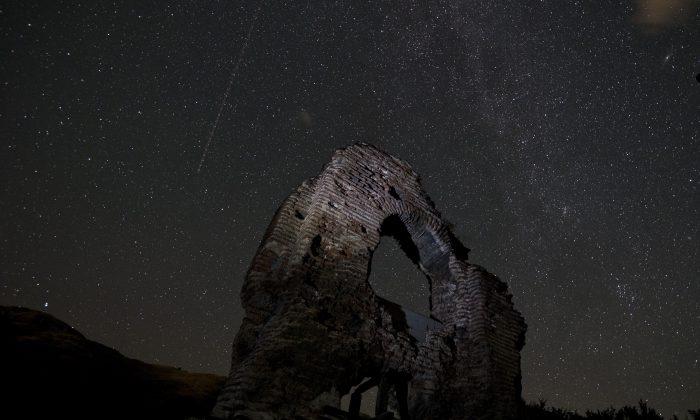WASHINGTON—People looking for a shooting star to wish upon may have found Wednesday overnight to be a dream come true.
Celestial timing helped people see more of the oldest meteor shower known to Earth, the Perseids, when they peaked 3 a.m. local Thursday, according to astronomers.
That’s “because the moon is almost new and there’s no moonlight to mess with the show,” said NASA meteor expert Bill Cooke. The last time the Perseids (pur-SEE'-uhdz) peaked with little moonlight was 2007.
The weather was good enough and one shooting star a minute, maybe more, was expected, said Cooke.
Clear skies were expected clear for an unusually large section of the United States, said Weather Underground meteorology director Jeff Masters. Much of the East, Midwest and far West will be almost cloudless. But the forecast wasn’t as nice for Florida, Minnesota, Wisconsin, Arizona, Utah and Idaho.
The sky show is pieces of comet Swift-Tuttle hitting Earth’s atmosphere at more than 133,000 mph and burning up. The best way to watch is to lie down and look up—no telescopes needed.
Meteor showers just touch people in a special way, said planetary scientist Sheila Kanani of the Royal Astronomical Society in London.
“For a lot of people, it’s a make-a-wish kind of mentality,” Kanani said. “There’s something quite romantic about a meteor shower.”.





